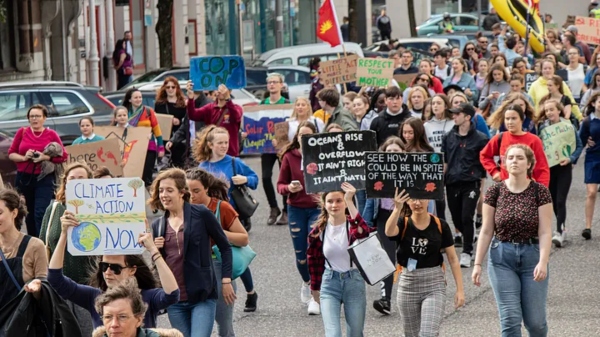
The world is currently facing a climate crisis, and marginalized communities are often the ones bearing the brunt of its impacts. Achieving environmental justice is therefore critical for creating a more equitable and sustainable future. One powerful tool for achieving this goal is grassroots activism.
“The power of grassroots activism lies in its ability to bring people together and effect change from the ground up. When individuals come together to demand environmental justice, they create a force that can overcome even the most entrenched interests.” — Van Jones, Environmental Advocate and Author.
Grassroots activism is a type of community organizing that mobilizes people at the local level to take collective action on a particular issue. When it comes to environmental justice, grassroots activism can take many forms, such as protests, sit-ins, petitions, and community meetings. These efforts can bring attention to environmental issues affecting marginalized communities and create pressure on decision-makers to take action.
“The environmental movement is about protecting things we all share. The air we breathe, the water we drink, and the land we inhabit.” — Bill Ruckelshaus
Grassroots activism is the foundation of environmental justice. It is the collective power of ordinary people that brings about extraordinary change.
One example of successful grassroots activism for environmental justice is the movement against the Dakota Access Pipeline (DAPL) in North Dakota, USA. The pipeline was intended to transport crude oil across four states, including the Standing Rock Sioux Tribe’s ancestral lands.
The construction of the pipeline posed significant environmental and cultural risks to the tribe, including the risk of oil spills and the destruction of sacred sites. The Standing Rock Sioux Tribe, with the support of thousands of activists from around the world, organized protests and created a campsite to block the pipeline’s construction. The movement eventually forced the U.S. Army Corps of Engineers to reconsider its approval of the pipeline and conduct an environmental review.
This example shows how grassroots activism can be a powerful tool for achieving environmental justice. Grassroots movements can provide a voice for marginalized communities that are often excluded from decision-making processes. They can also bring attention to environmental issues that would otherwise go unnoticed.
In addition to raising awareness, grassroots activism can also create opportunities for collective action. By organizing protests and other forms of direct action, activists can put pressure on decision-makers to take action on environmental issues. This can include anything from passing new environmental regulations to divesting from fossil fuels.
However, grassroots activism is not without its challenges. Activists may face pushback from those in power, as seen in the case of the DAPL movement. Activists may also face challenges in mobilizing people to take action, especially in communities where environmental issues may not be seen as a priority.
Despite these challenges, grassroots activism remains an important tool for achieving environmental justice. By mobilizing communities and creating pressure on decision-makers, grassroots activists can play a critical role in creating a more equitable and sustainable future.
To wrap up the discussion, achieving environmental justice requires collective action from all levels of society, including grassroots activism. Through organizing and mobilizing communities, grassroots activists can bring attention to environmental issues affecting marginalized communities and create pressure on decision-makers to take action. The success of movements like the one against the DAPL shows that grassroots activism can be a powerful force for change.
The Critical Role of Grassroots Activism.
Grassroots activism is a powerful tool for achieving environmental justice by raising awareness and creating opportunities for collective action. It gives a voice to marginalized communities and brings attention to environmental issues that may otherwise go unnoticed. Despite facing challenges such as pushback from those in power and difficulty mobilizing people in certain communities, grassroots activism remains critical for creating a more equitable and sustainable future.
“We do not inherit the earth from our ancestors, we borrow it from our children”
—
This post was previously published on medium.com.
***
All Premium Members get to view The Good Men Project with NO ADS. Need more info? A complete list of benefits is here.
 Compliments Men Want to Hear More Often Compliments Men Want to Hear More Often |
 Relationships Aren’t Easy, But They’re Worth It Relationships Aren’t Easy, But They’re Worth It |
 The One Thing Men Want More Than Sex The One Thing Men Want More Than Sex |
 ..A Man’s Kiss Tells You Everything ..A Man’s Kiss Tells You Everything |
—–
Photo credit: Niels Jilderda on Unsplash

